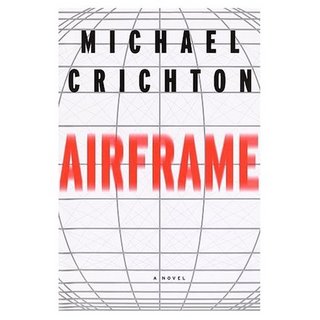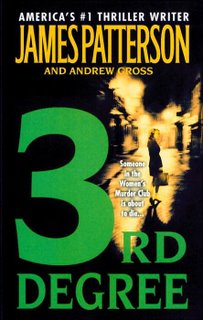
Written by Michael Crichton
When I first started reading this novel, something about it felt suspiciously familiar. But since there are a slew of plane-crash disaster stories out there, I figured maybe I'd read something similar once. About halfway through, though, I realized that I had read this book, or at least part of it, maybe ten years ago. The details were hazy in my memory, and I don't think I ever finished it. Which should have been a warning sign. It's a pretty slow, lackluster story.
In a nutshell: a flight from Hong Kong to Denver unexpectedly starts "porpoising" — pitching violently up and then down several times. End result: four people dead, 56 injured. Casey Singleton, a nice, wholesome midwestern type who has managed to make her way to a VP position at Norton aircraft (the builder of the plane), is assigned the duty of investigating what went wrong. While she's unraveling the myriad of details related to the accident, a bitter labor dispute is brewing, and an investigative news program is trying to expose Norton as a negligent, money-hungry corporate beast that has no regard for passenger safety.
Really cool elements:
- I loved the way Crichton makes fun of the media. The television people in this story are of the "60 Minutes" variety. Crichton has some fun developing their characters as shallow, finger-pointing monsters who are only interested in sensationalizing the accident for the sake of their ratings.
- There was an awful lot of technical detail, without much explanatory help for those of us who don't build or service airplanes. Lots of acronyms too (which I'm sure is reflective of real life in the airplane-building industry). Maybe I'm just not enough of a gearhead to get my brain around all the details, but I found it easy to get bogged down.
- Some of the subplots just end up going nowhere. For example, in the first half of the book, some of Norton's union thugs are out to get Casey; the company even assigns 24-hour bodyguards to trail her every move. But we never find out anything concrete about the thugs who lurk in the dark hangar corners, and we never hear any more about the guards (wouldn't they kind of have an impact on her daily life?)
- The ending really lacked punch. After 350 pages, I felt like I deserved a much more exciting explanation for why the plane nosedived.




